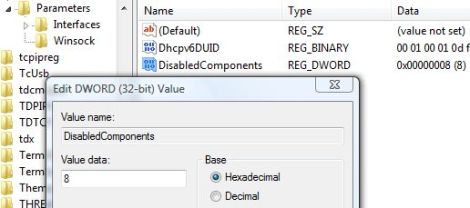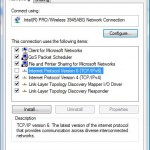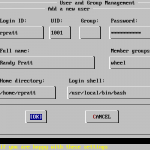Users can turn off IPv6 support in Windows. Teredo client in Windows is enabled but inactive by default, but it will activate automatically when required or firewall settings allow an application to use Toredo. When activated, the Teredo client must initially obtain information such as the type of NAT that the client is behind by connecting to one or more Teredo servers. To determine the IPv4 addresses of Teredo servers, the client may send a DNS query to resolve the name teredo.ipv6.microsoft.com.
To prevent Teredo related DNS query, or for those who doesn’t use Teredo or IPv6, users can disable or control Teredo in Windows by using the following methods. Microsoft (resource no longer available) confirms that it is usually workable to disable Teredo, because other technologies can be used instead, for example, Intra-Site Automatic Tunnel Addressing Protocol (ISATAP) and 6to4, or you could be running dual IP stack.
Turn Off Teredo by Using the Netsh Command
- Open elevated command prompt by clicking on Start, click All Programs, click Accessories, right-click Command Prompt, and click Run as Administrator.
If the User Account Control dialog box appears, confirm that the action it displays is what you want, and then click “Continue” or “OK”.
- At the command prompt, type the following lines (press ENTER after each line):
netsh interface teredo
- At the netsh interface teredo command prompt, type:
set state disabled
netsh interface teredo set state disabled
Turn Off Teredo by Specifying a Registry Setting
- Run Registry Editor by typing the following text in Start Search and then press Enter:
regedit
If the User Account Control dialog box appears, confirm that the action it displays is what you want, and then click Continue.
- Navigate to the following registry key:
HKEY_LOCAL_MACHINE\SYSTEM\CurrentControlSet\Services\Tcpip6\Parameters\
- Right-click Parameters, select New in the contextual menu, then select DWORD Value, and then type the following name for the new value (type the name exactly as shown, including capitalization):
DisabledComponents
- Double-click DisabledComponents, select Hexadecimal, and then in Value data, type:
8
- Click OK.
- Restart the computer.
Turn Off Teredo by Using Graphical User Interface
- In Windows Vista and Windows 7, click Start -> Control Panel -> System and Maintenance and open Device Manager; In Windows 8, Windows 8.1 and Windows 10, open Power User Quick Access menu, and select Device Manager.
Click Continue or OK if prompted with UAC permissions request.
- In device manager, click the View menu and select (tick) Show hidden devices.
- Expand the Network Adapters tree.
- Right click on Teredo Tunneling Pseudo-Interface and select Disable.









